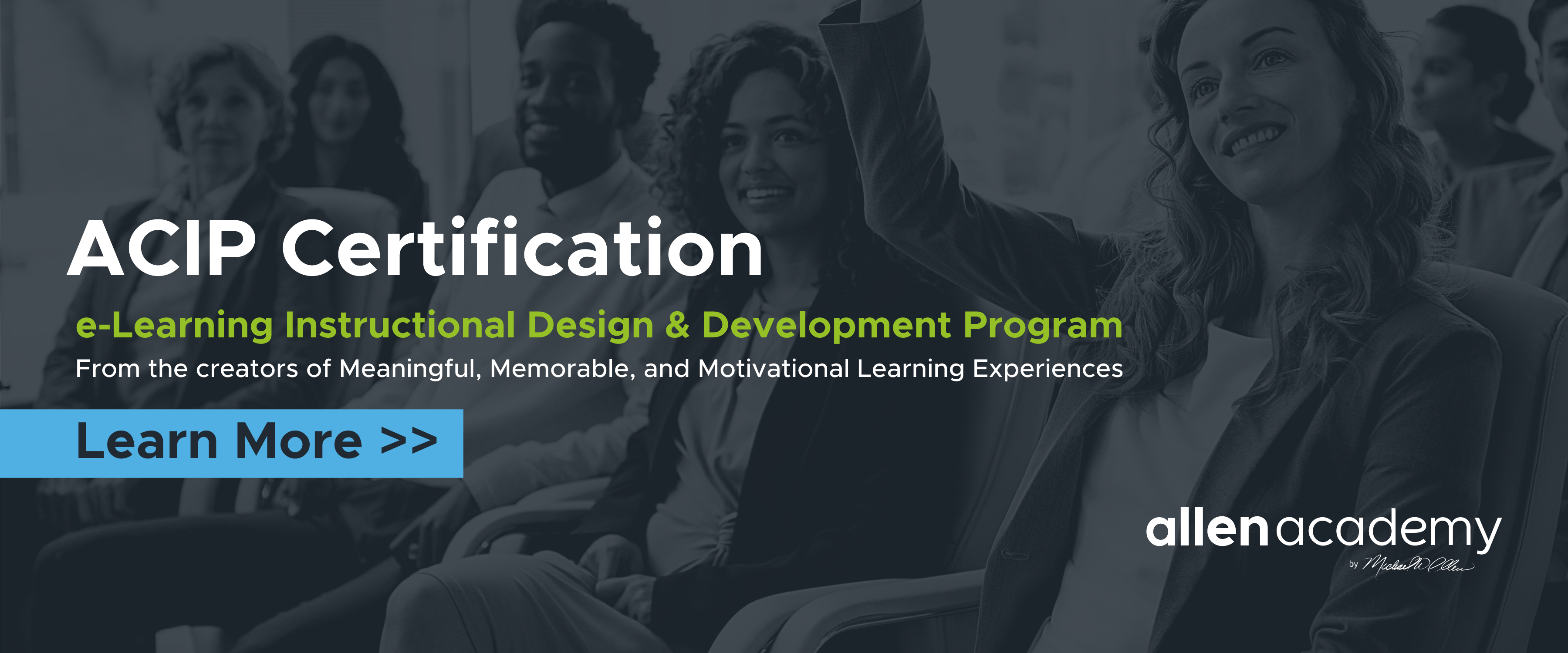Blog
Gamification: 3 Steps to Get the Recipe Right
3 Reasons to Love Microlearning Microlearning refers to bite-sized pieces of learning content, usually in video format, that learners can quickly ...


3 Reasons To Love Microlearning
By Ellen Burns-Johnson | July 07, 2015 | Custom Learning | 0 Comments
3 Reasons to Love Microlearning
Microlearning refers to bite-sized pieces of learning content, usually in video format, that learners can quickly access. My favorite examples of microlearning are meant to be used as performance support or to serve up quick inspirational bites of insight.
At only a few minutes in length, a microlearning experience is concise, and it should be mobile. The idea behind microlearning is that learners can conveniently pull it up anywhere, at any time. For example:
- You can watch a video about sewing a t-shirt hem while you stand in the middle of an aisle at JoAnn's.
- After a particularly frustrating sales call, you might pull up some ideas for overcoming objections to use on your next attempt.
There's an endless list of possibilities.
Conversely, the list of reasons why I love the microlearning approach is actually pretty short. Let's take a look at 3 factors that can make microlearning a powerful addition to your instructional design practice.
1. It's focused.
Microlearning is most effective when it targets only one thing at a time. Let's use a basic task—say, how to create a new event in SalesForce—for a little thought experiment.
If we were to design a microlearning experience to address this task, we'd assume that our learners only need help with making a new event in SalesForce. They probably aren't seeking a video on the History of Sales Software or the entire curriculum of SalesForce 101. Digression makes the experience less useful for those in need of performance support, so we'd want to keep our focus narrow.
(Those of us who advocate for performance-focused e-learning have been espousing similar ideas for years, and you can read more about that here, here or here.)
If microlearning isn't intended to be used as performance support, and is instead conceptual, then I'm of the opinion that it should still only cover one idea, and it should still be brief.
Remember, the goal of microlearning is to create a learning experience that a person can complete while waiting for his lunch to cook in the toaster oven, or at the end of the day while defrosting her car.
2. It's relatable.
Video is often referenced as the preferred medium for microlearning, as it's short, media-rich with visual and audio, and is easily accessible by learners who are now both mobile and accustomed to platforms like YouTube and Vimeo.
Since microlearning aims to capture the feel and accessibility of these popular video platforms, it means that you might not have to invest a ton of production resources into it to achieve credibility. (That's not to say that you want to disregard quality entirely—just that it's not too difficult or expensive these days to create a decent video.) Effort can be spent towards making the content genuine rather than flashy.
We want to capture the feeling that employees get when they pop their head through a mentor's office door: instant guidance and advice. The difference is, with microlearning, employees can get that advice anywhere, and they don't have to interrupt a fellow employee to get it!
3. It fits well with other types of learning experiences.
Given the right approach, microlearning can be a powerful tool to support and advance learning. However, I don't mean to suggest that it's a panacea for all training challenges.
With a microlearning-style video or blog post, you can determine if learners watched or read the material, but you can't validate whether they can actually replicate the task or apply the concept in some meaningful way. Other proponents of microlearning suggest using social media to have learners upload pictures or videos of their own performance in action. I like this idea, and I think it can work if you have an active network of performers in your organization.
But in some situations, you need the ability to observe learners' behaviors and provide coaching on a more granular level. One example would be new-hire software training. New employees don't have any context for how software is used and microlearning videos might be confusing and overwhelming. Robust e-learning, in the form of realistic software simulations, may be best here—then you can provide coaching at the gesture level that microlearning can't provide. But videos demonstrating tasks in the software would be a great supplemental tool for new hires, and could serve as a reference for more experienced employees as well.
Get Certified through the Allen Academy!

About the Author: Ellen Burns-Johnson
Ellen Burns-Johnson has over a decade of experience in the education and training industries. She has crafted the instructional strategy and design for dozens of major initiatives across diverse topics, from classroom safety to IT sales. Emphasizing collaboration and playfulness in her approach to creating learning experiences, Ellen’s work has earned multiple industry awards for interactivity and game-based design. Ellen is also a Certified Scrum Master® and strives to bring the principles of Agile to life in the L&D field. Whether a client is a Fortune 100 company or a local nonprofit, she believes that the best learning experiences are created through processes built on transparency between sponsors and developers, empirical processes, and respect for learners. Outside of her LXD work, Ellen plays video games (and sometimes makes them) and runs around the Twin Cities with her two mischievous dogs (ask for pictures).
Comments
Would you like to leave a comment?
Related Blog Posts

By: Ellen Burns-Johnson | Sep, 2019
Category: Custom Learning, Strategic Consulting

Blog
Three Things You Don't Need in Your Microlearning Video
3 Reasons to Love Microlearning Microlearning refers to bite-sized pieces of learning content, usually in video format, that learners can quickly ...
By: Ellen Burns-Johnson | Dec, 2015
Category: Custom Learning

Blog
How to Use Context to Create Meaning in Learning Games
3 Reasons to Love Microlearning Microlearning refers to bite-sized pieces of learning content, usually in video format, that learners can quickly ...
By: Ellen Burns-Johnson | Nov, 2015
Category: Custom Learning

